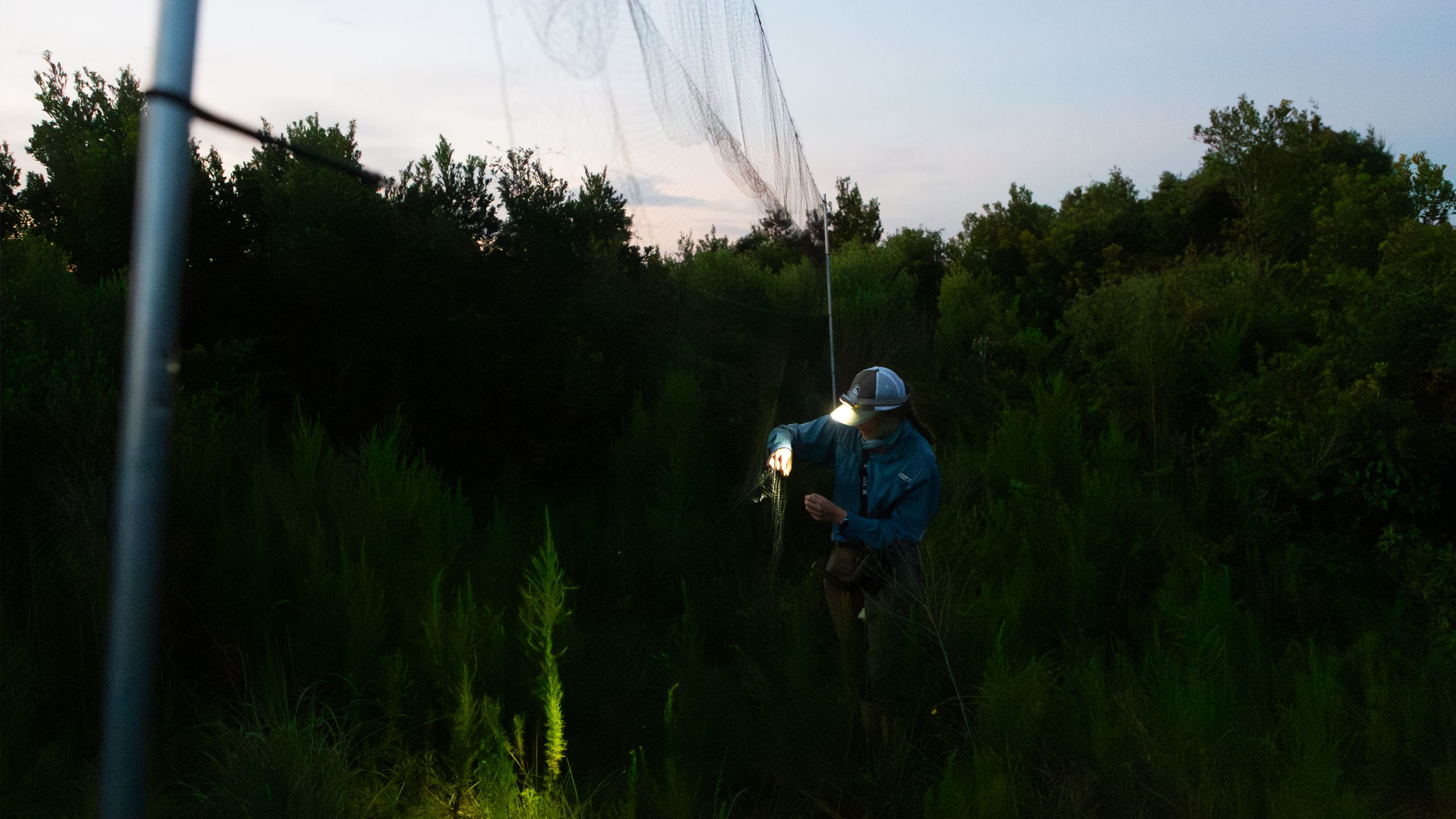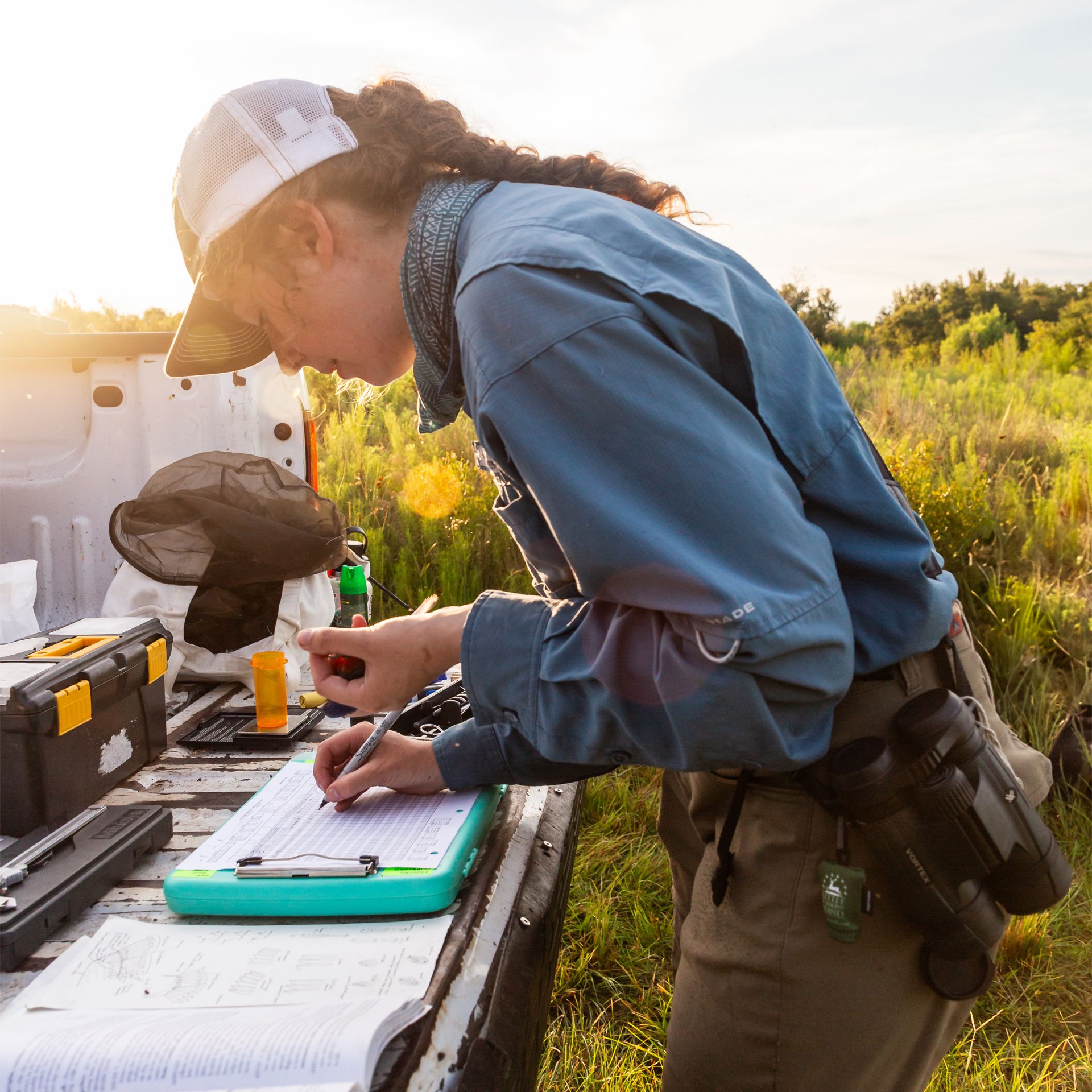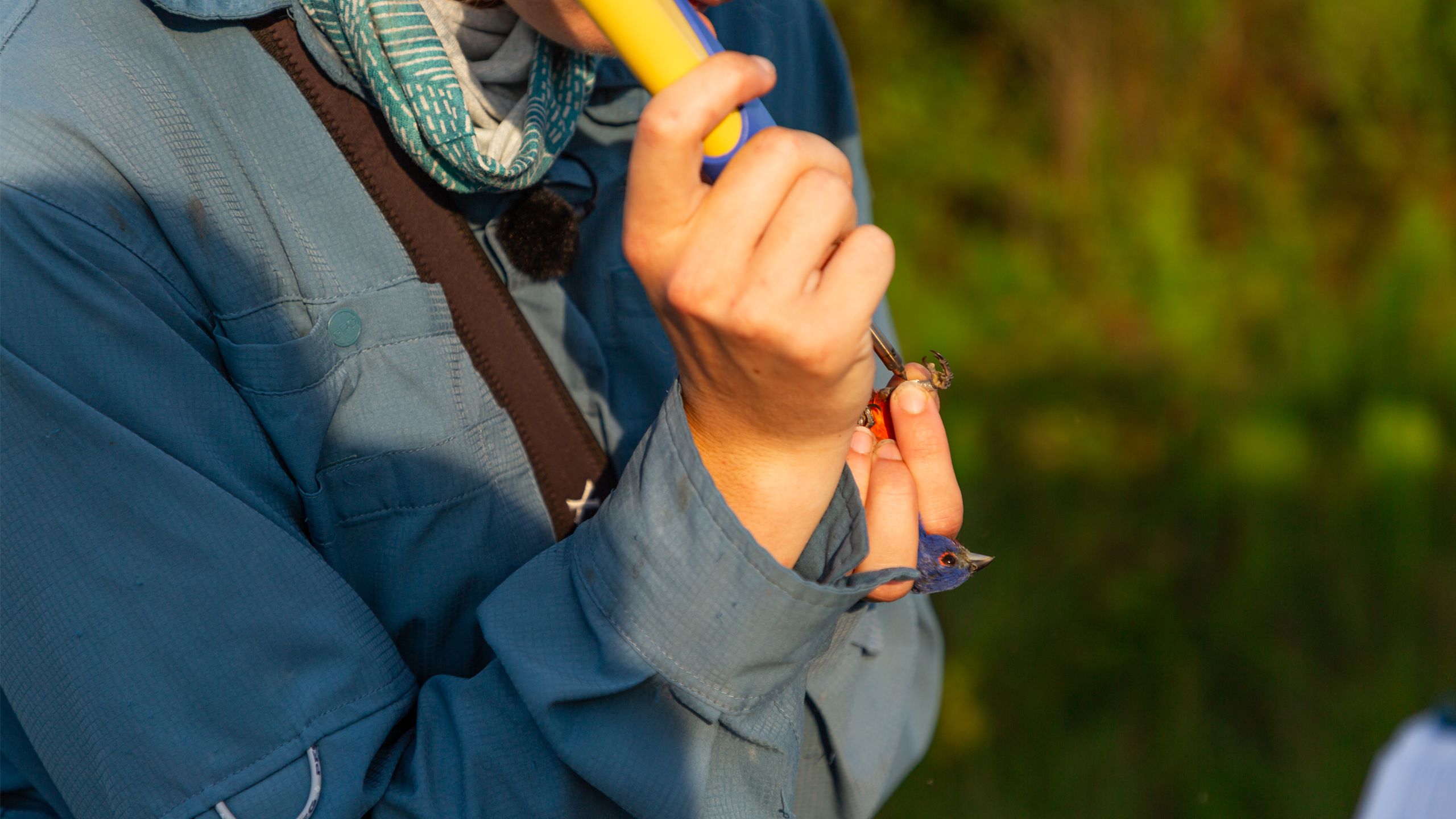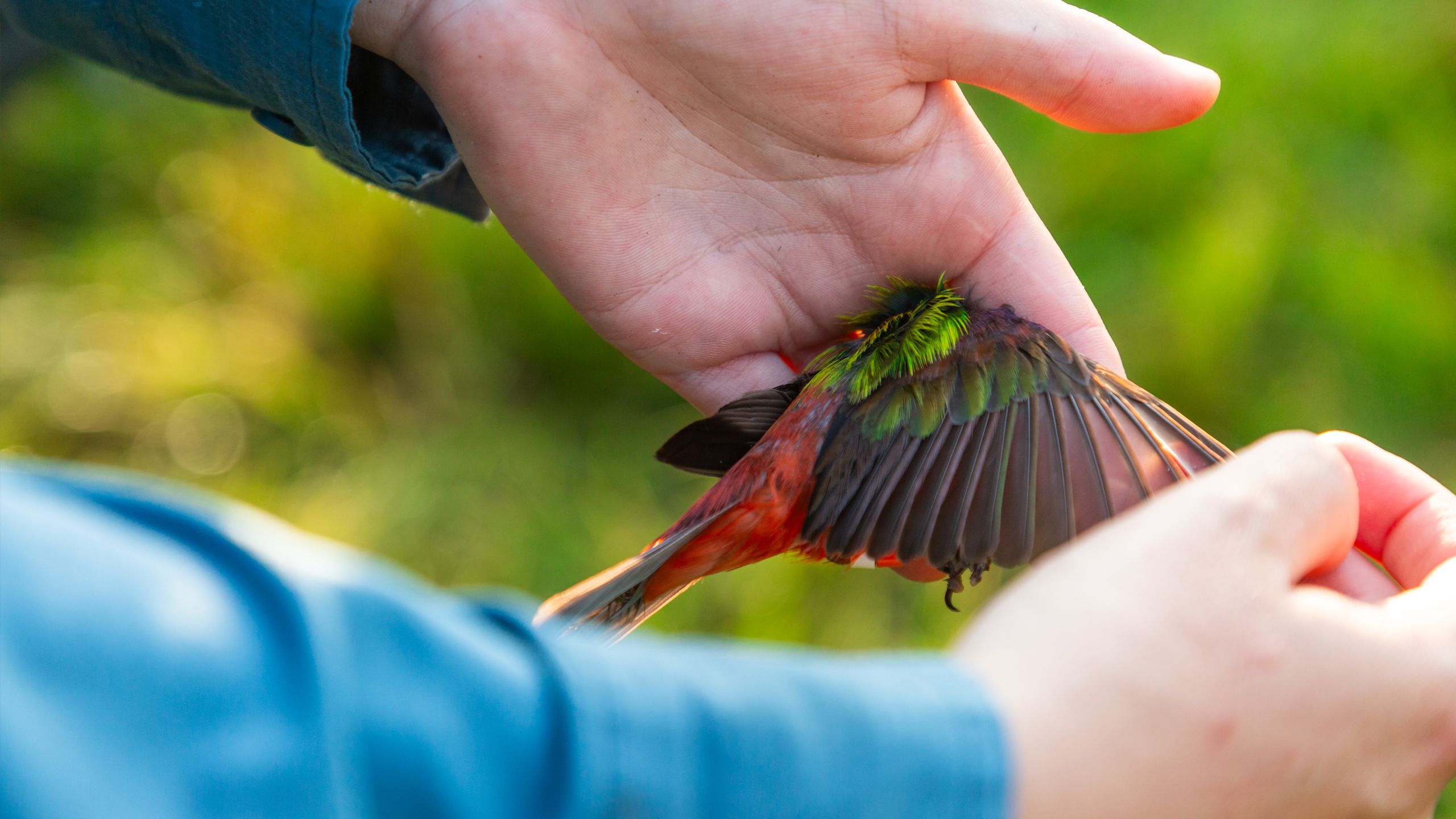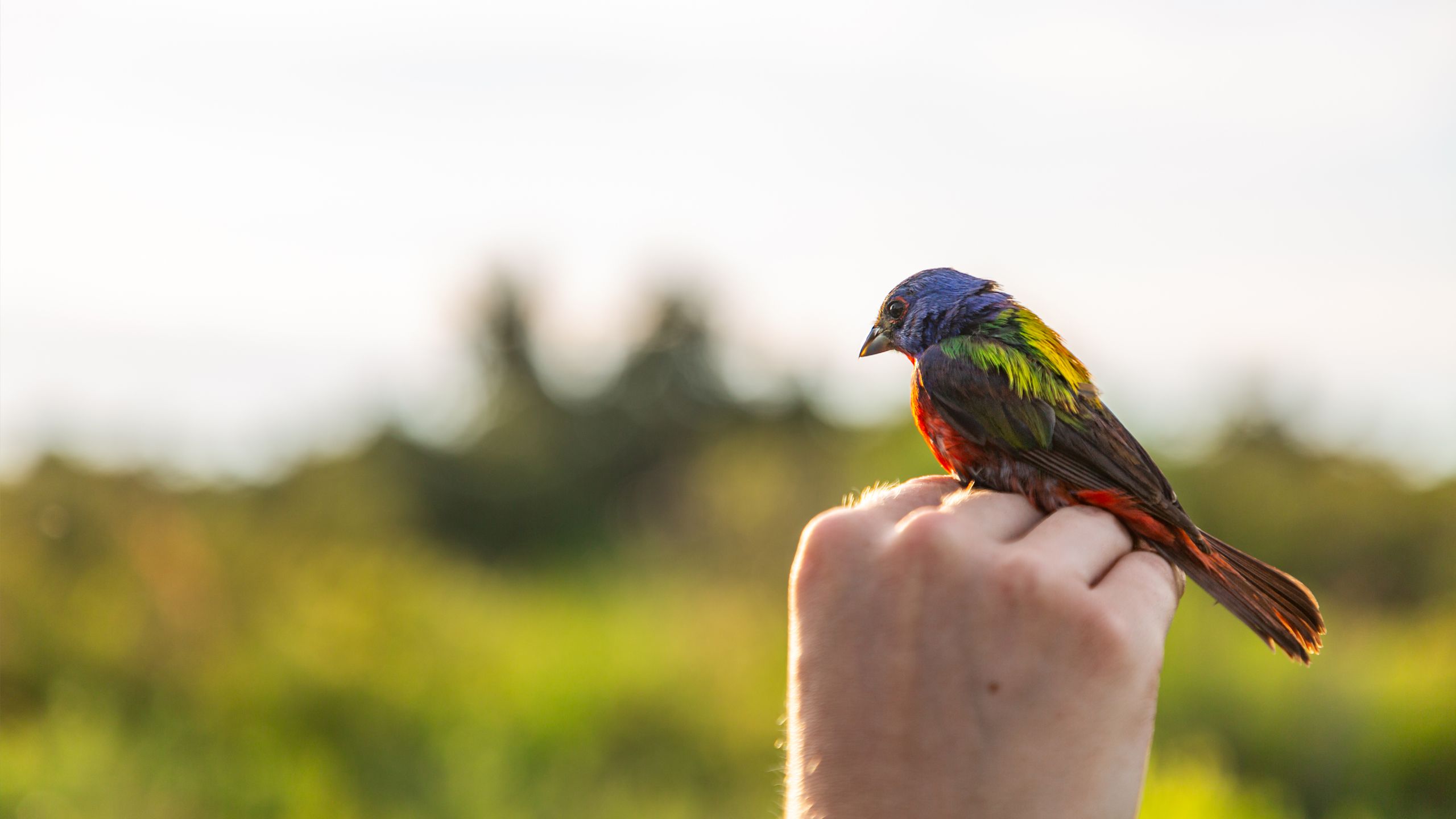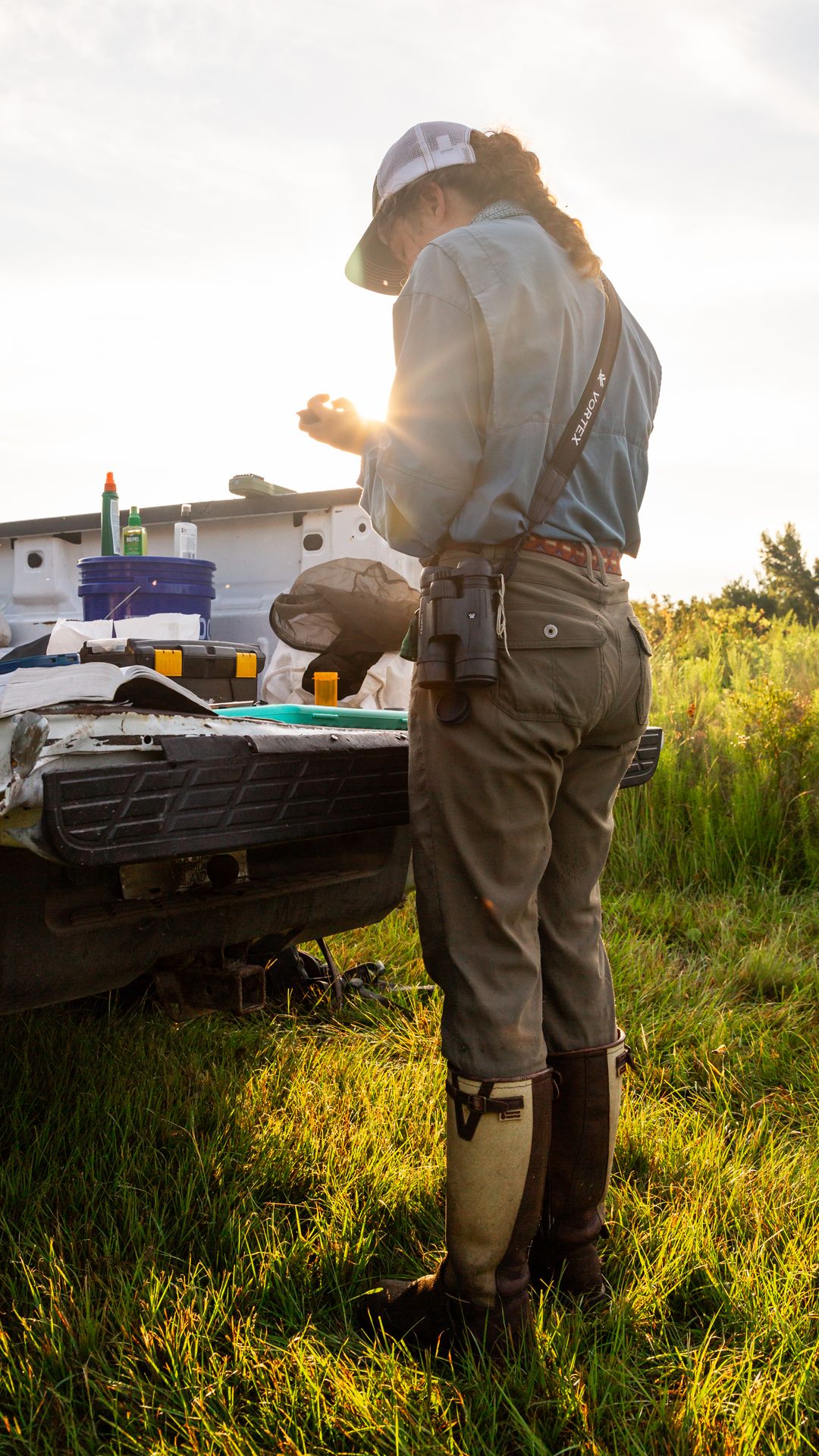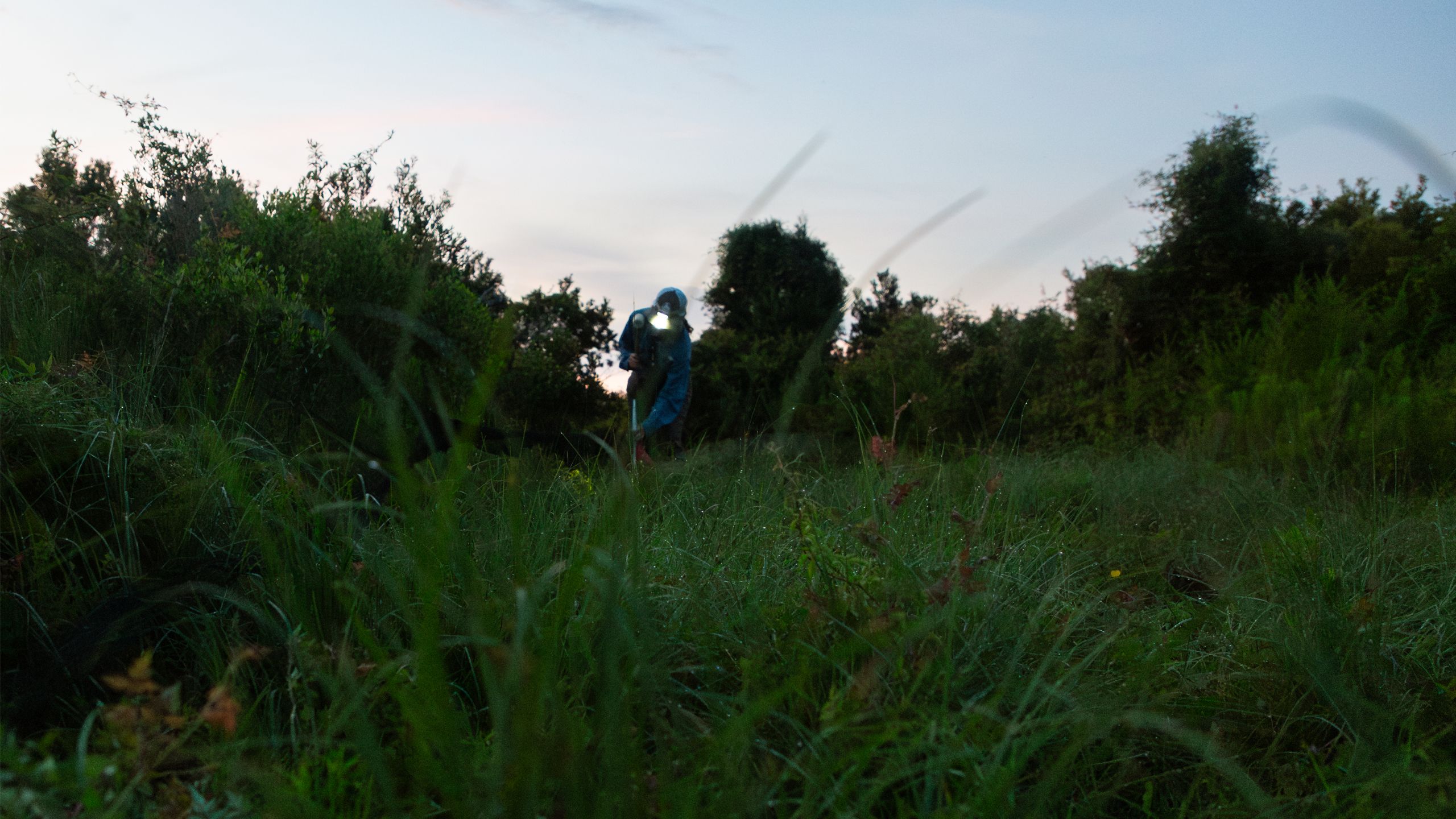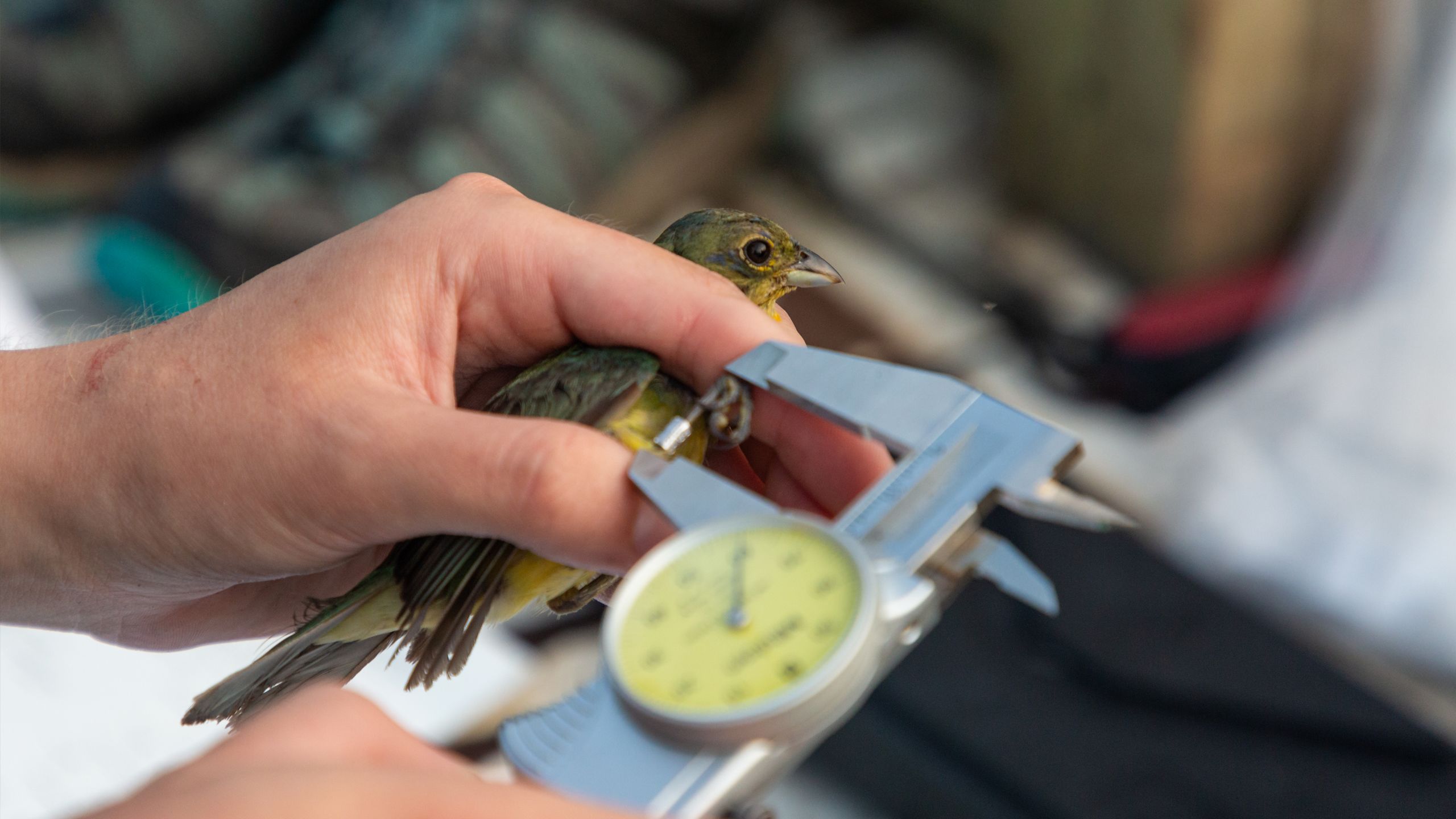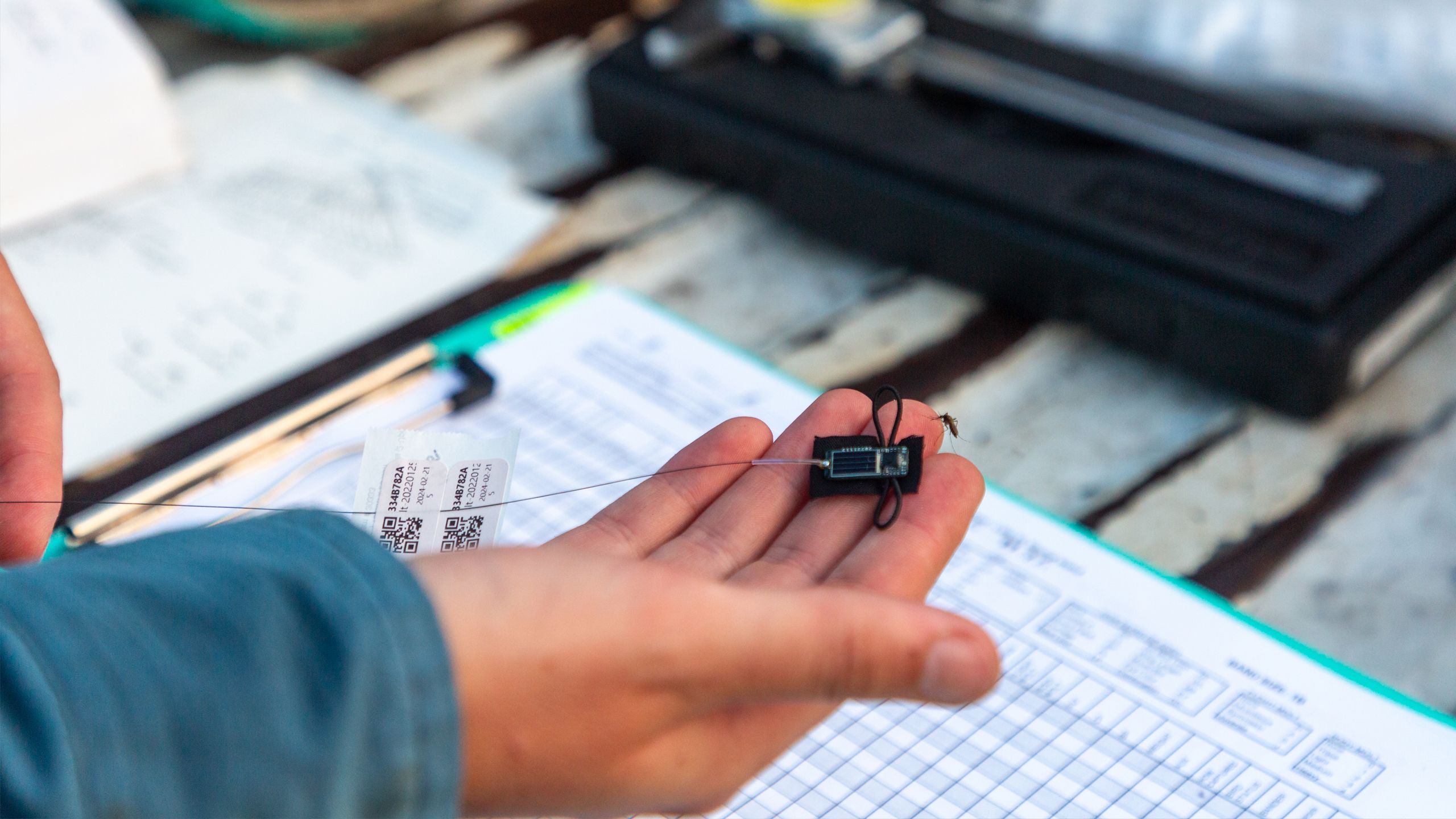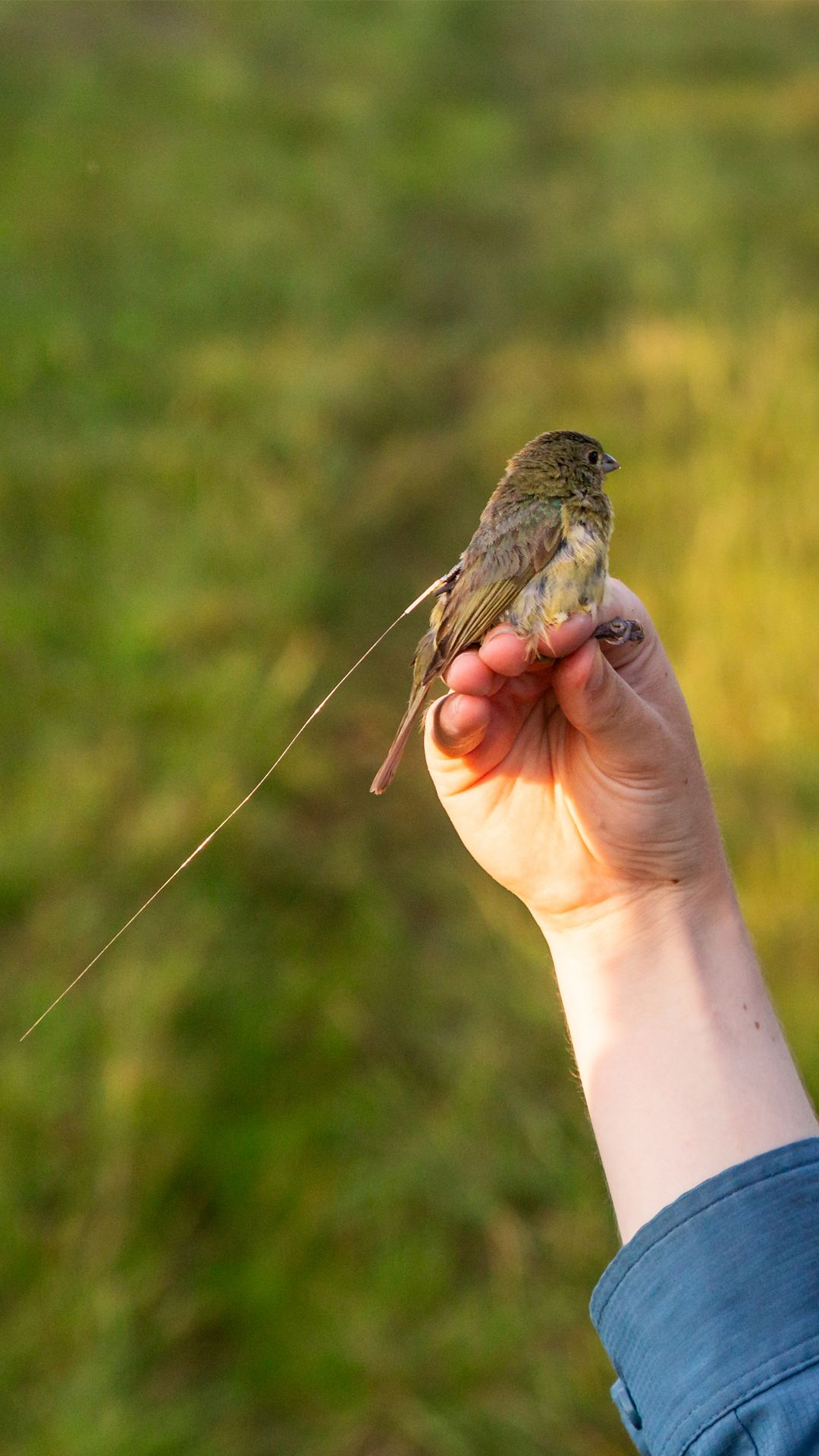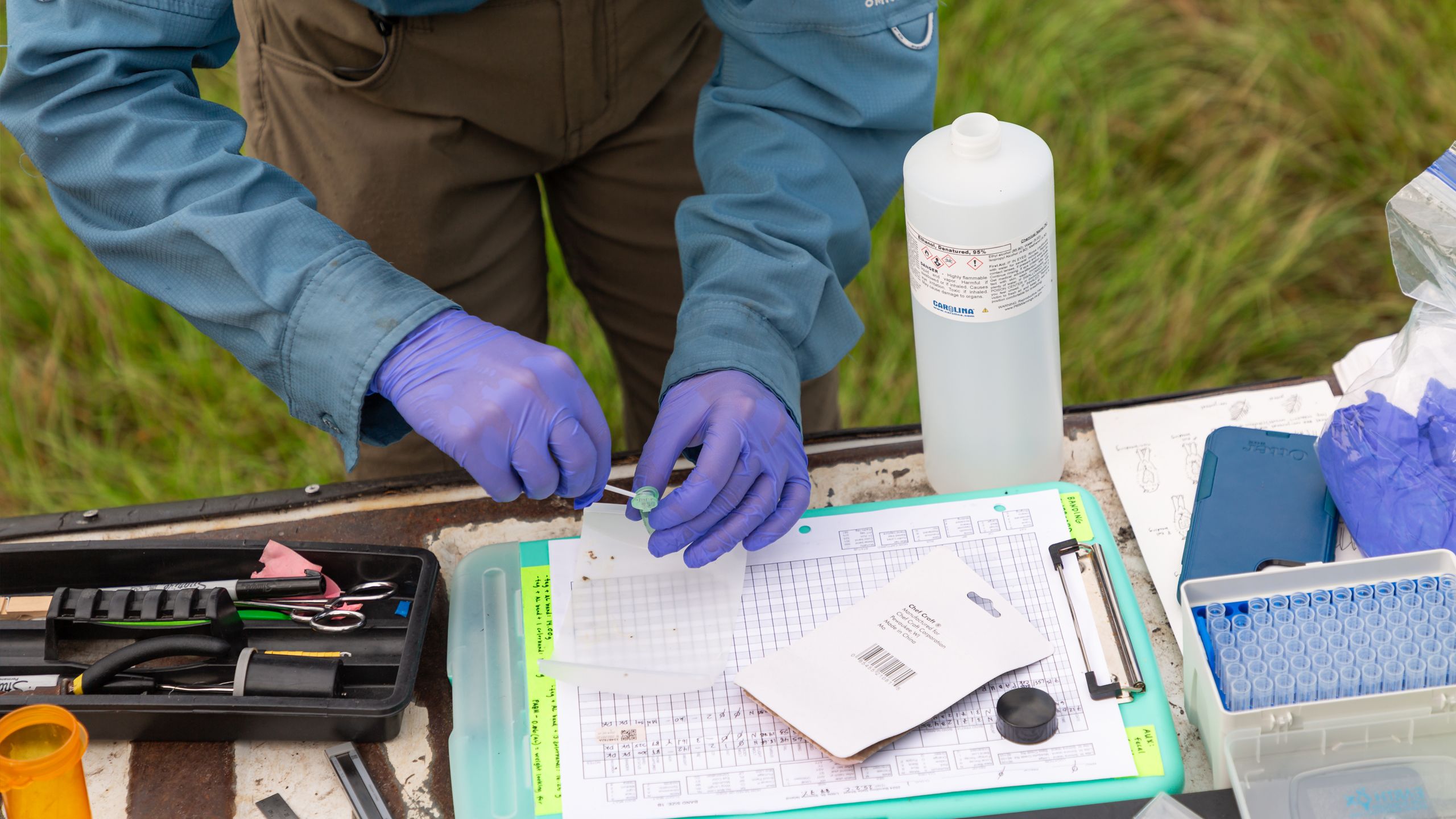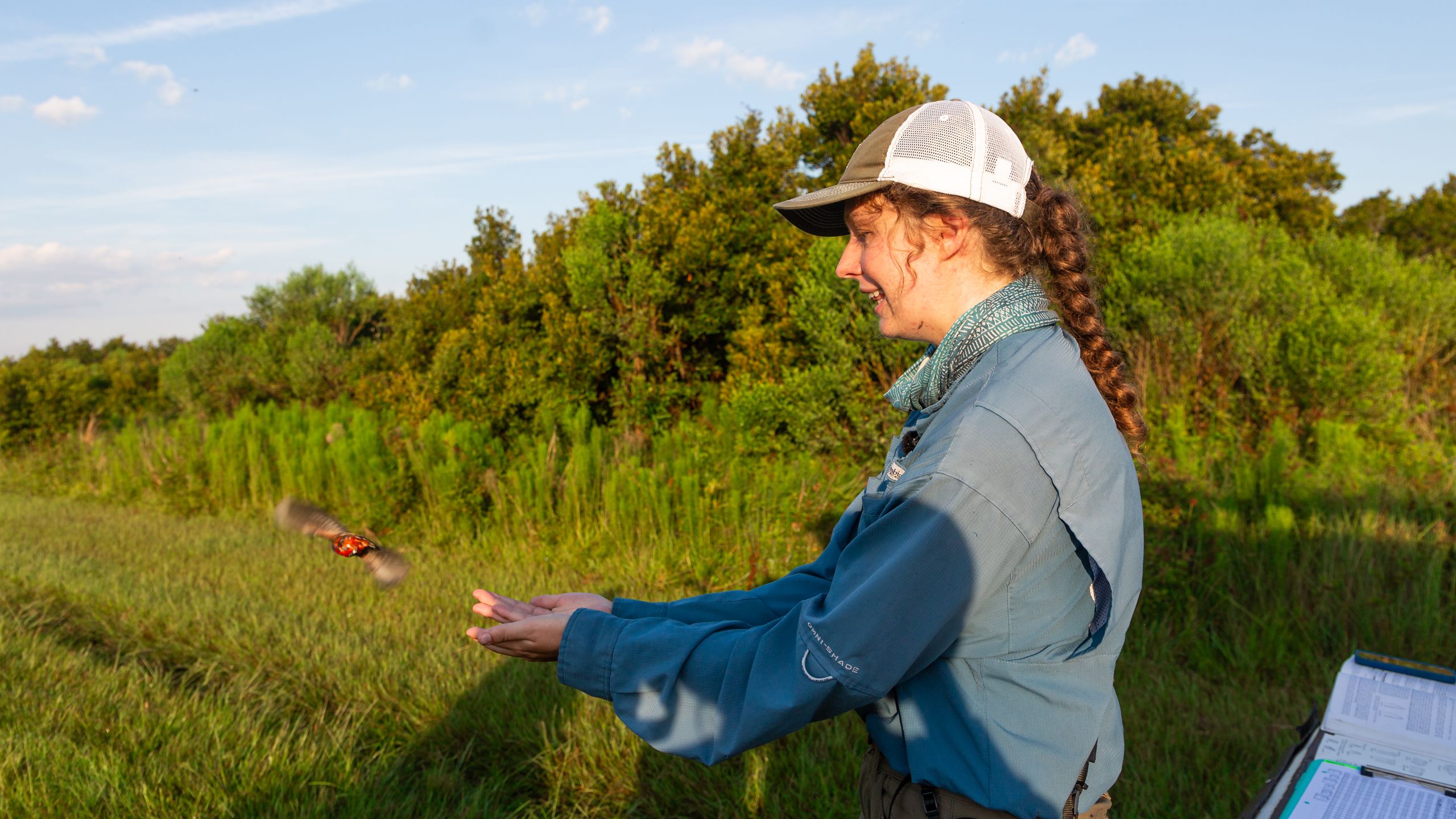Good Will Bunting
How research on a vibrant songbird could help protect threatened maritime grasslands.
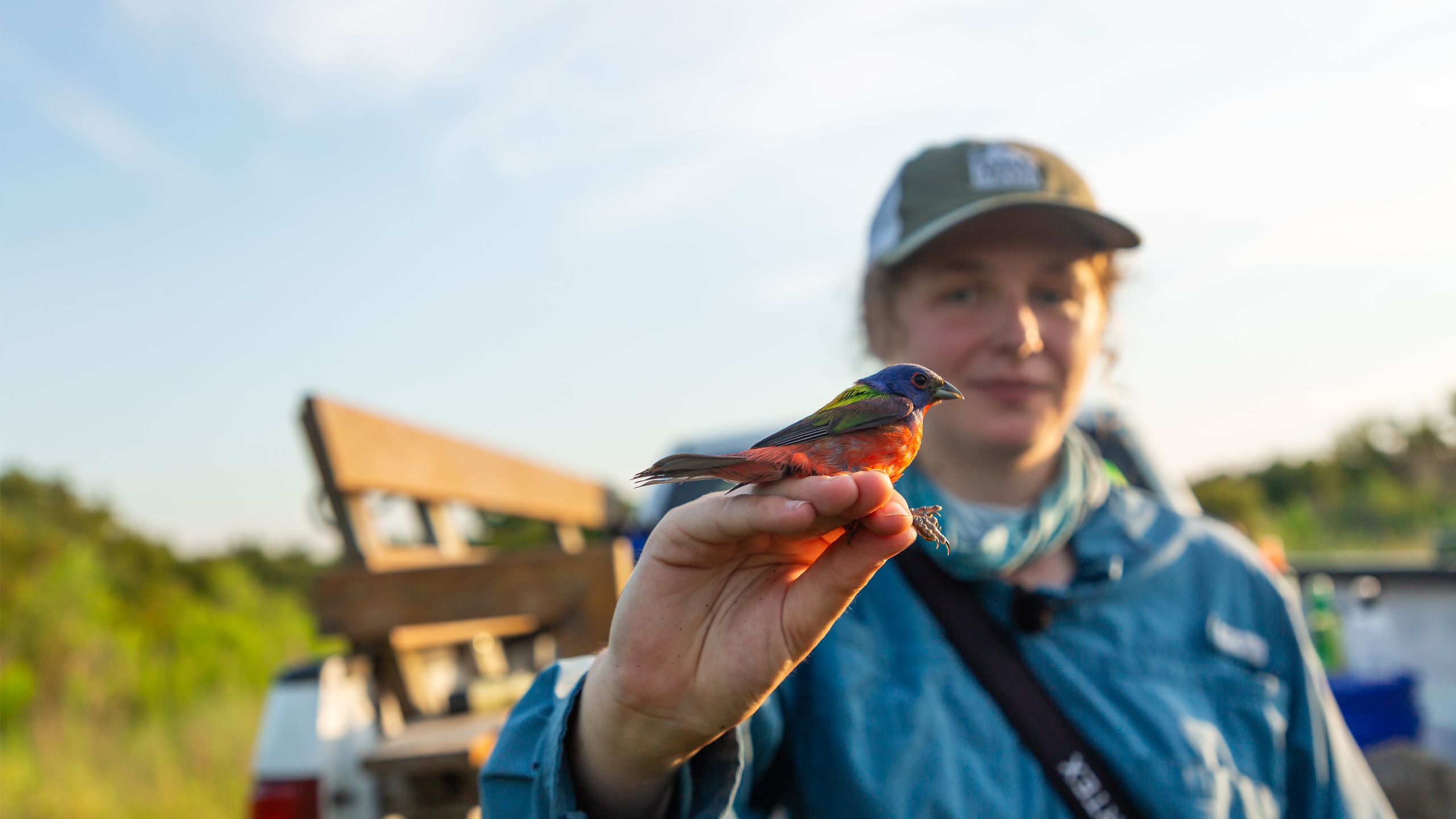
Diane Klement knew exactly who she had in her mist net before she even reached it. The familiar flash of red, blue and green feathers gave him away—it was Macho Man, a painted bunting she had encountered many times before. For the past two years, Klement, a graduate student at the University of Georgia, has been studying buntings as part of her master’s research on Little St. Simons Island.
Macho Man’s nickname was given by Klement and fellow researchers on the island. Weighing in at just over 16 grams, this fiesty little bird has a big personality. Not only has he evaded banding attempts several times, but Klement says he also enjoys “singing to the ladies” from an oak tree that sits on the edge of a large expanse of maritime grasslands, chasing away other males that come into his territory.
Macho Man is part of a relatively large population of painted buntings that migrate to the Georgia coast in the spring and summer for breeding season. These charismatic songbirds, well loved by birders across the country due to their vibrant colors and attraction to backyard bird feeders, are experiencing rapid population declines, mostly due to habitat loss from development.
Klement sets her mist net, used to catch buntings as part of her research.
Klement sets her mist net, used to catch buntings as part of her research.
Klement applies a band to Macho Man.
Klement applies a band to Macho Man.
Klement banded more than 100 buntings over the course of her study.
Klement banded more than 100 buntings over the course of her study.
“For as common as they are and as much as people love them, there’s still a lot we don’t know, especially the type of foods they eat and their movement within different plant communities,” says Klement, whose research is partially funded through a research traineeship with UGA Marine Extension and Georgia Sea Grant.
To answer these questions, Klement is looking at how birds are using specific native plants as food and habitat within maritime grasslands on Little St. Simons Island. The goal is to identify, by tracking buntings and studying their diet, which plants in these grasslands are most important, while also gaining insight into management practices that contribute to bunting success.
Klement’s study builds on the work of her advisor, Clark Rushing, an associate professor at the UGA Warnell School of Forestry and Natural Resources, who began researching painted bunting populations in the southeastern U.S. from North Carolina to Florida in 2017. Among all the sites in his study, he discovered the highest concentrations of buntings on Little St. Simons Island.
“It was obvious that this was really good painted bunting habitat,” says Rushing. “We think that’s because [the island] puts a lot of emphasis on early successional grassland habitats.”
Little St. Simons Island, privately owned and protected through a conservation easement donated to The Nature Conservancy, contains some of the largest remaining maritime grasslands in the southeastern U.S. This region has lost between 90% and 99% of its native grasslands, making the island a critical refuge for several species of concern that thrive in this habitat.
Maritime grasslands occur naturally just behind the dunes on barrier islands. Unfortunately, this prime location is also where oceanfront homes and condos are often built.
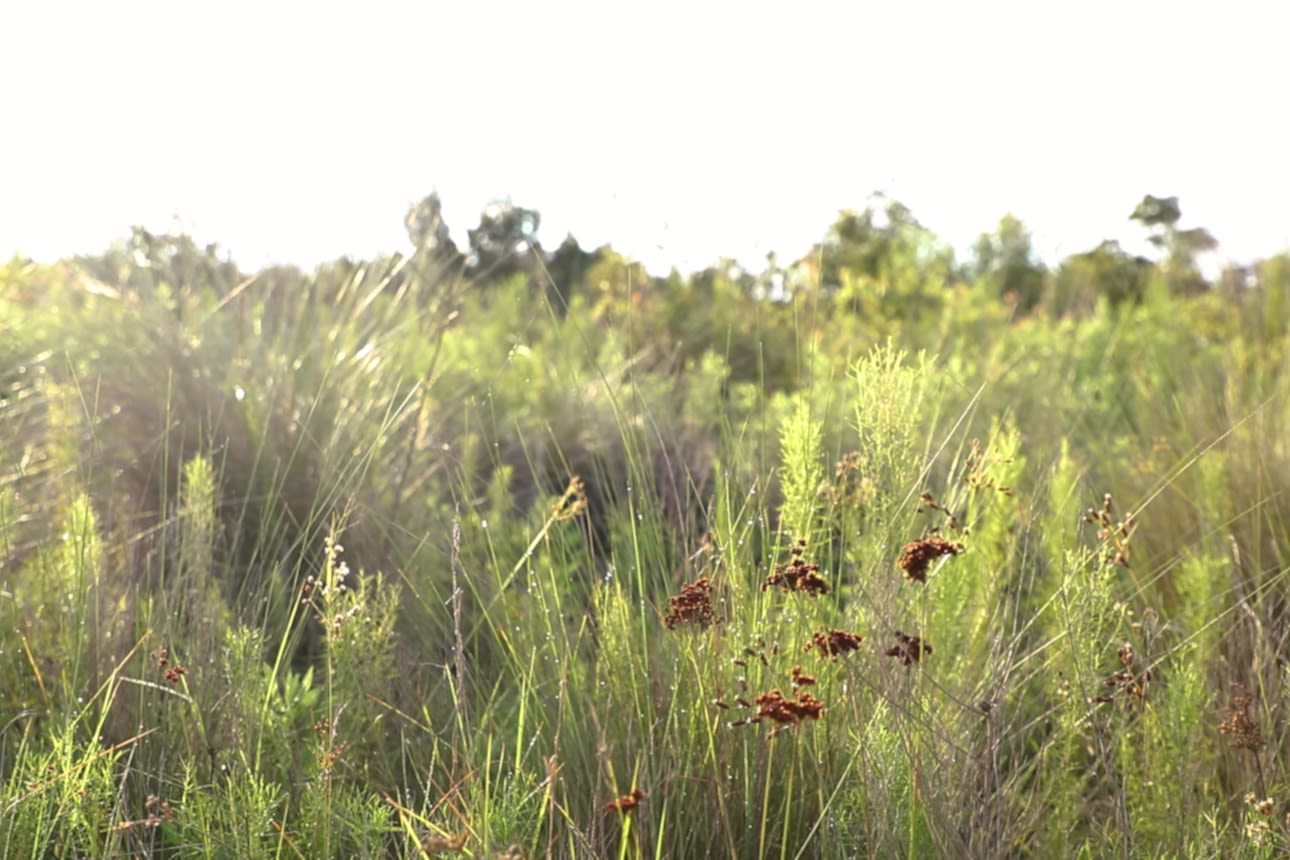
Scott Coleman, ecological manager for the island’s Center for Coastal Conservation, employs management practices that enable the grasslands to persist.
“Maritime grasslands are a globally threatened plant community, and we use fire as a tool to help maintain them,” says Coleman.
The island manages 300 acres of this rare habitat through prescribed burning. According to Coleman, the burns prevent woody shrubs and trees from overtaking the grasslands, while encouraging the growth of native grasses.
To understand if this practice benefits buntings and the plants they rely on, Klement looked at the fine-scale movement and diet of buntings at sites managed through different burn regimes. Her results show that buntings spend more time in grasslands with abundant native grasses that are being managed with prescribed burns.
More specifically, she found that ideal conditions in grasslands occur one to two years after a burn, when lesser-known native plants and insects that buntings actively forage on are present.
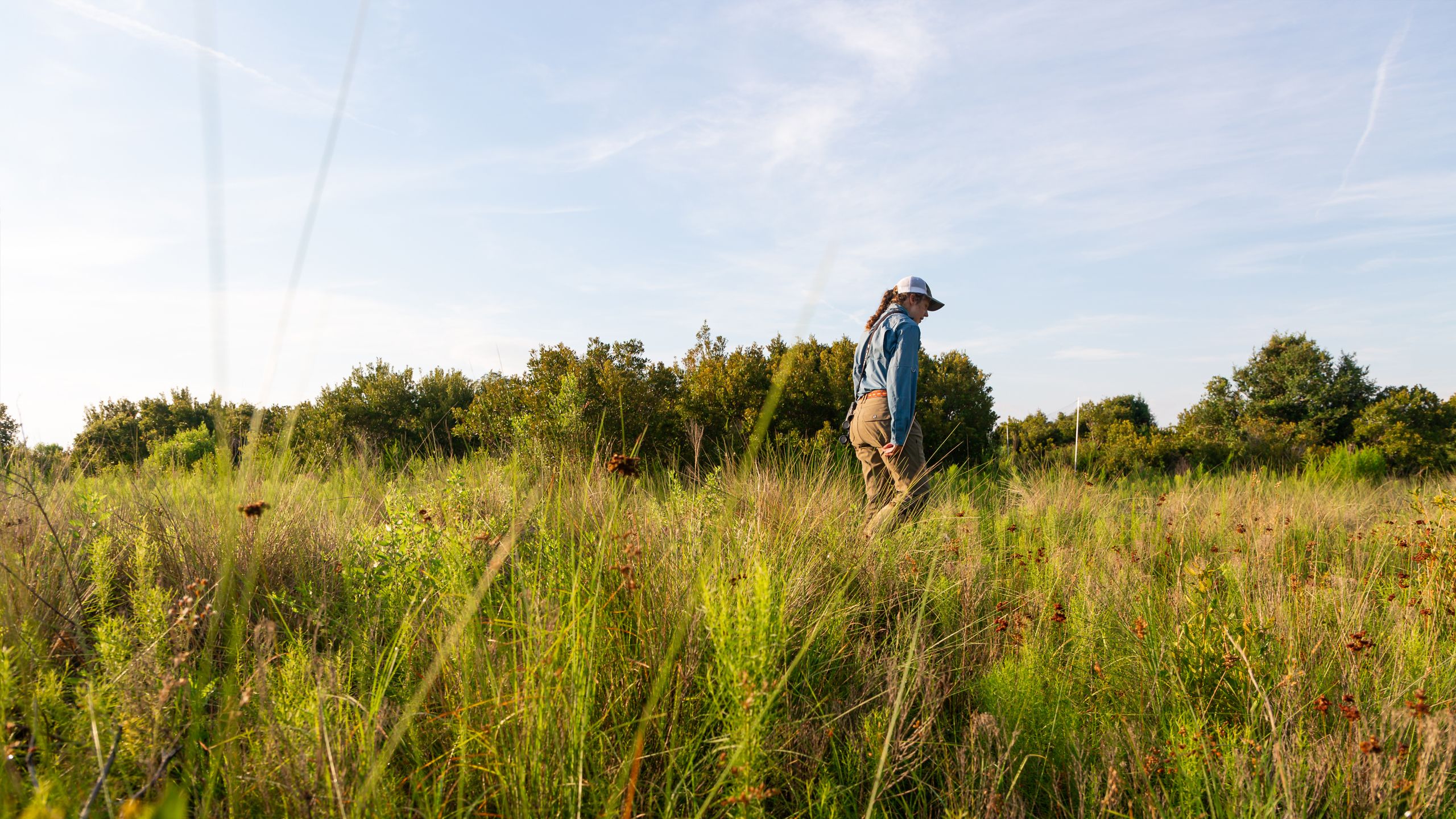
Setaria parviflora is a native plant found in maritime grasslands. The seeds of the plant were found in fecal samples collected by Klement.
Setaria parviflora is a native plant found in maritime grasslands. The seeds of the plant were found in fecal samples collected by Klement.
During her 2023 sampling season, she deployed radio tags on 14 buntings, enabling her to track each bird’s location minute by minute and determine which plant communities the birds were using. She also collected 83 fecal samples and used DNA analysis to identify the specific species or genus of plants and animals the buntings consumed.
“Across ages and sexes and throughout the year, birds were eating a lot of native seeds,” says Klement, who identified native plants, such as Dichanthelium, Setaria, and Parietaria, as being important seed sources for the birds.
“We also found that different types of caterpillars were really important to the buntings,” she adds.
Some of these caterpillars depend on one or two plants in the landscape for survival, like Solidago sempervirens, a type of goldenrod that hosts caterpillars that are a favorite among female buntings in the breeding season.
“They would just hop from plant to plant, eating big, ripe, juicy green caterpillars that were on it,” Klement says.
Klement takes various measurements of an immature male painted bunting.
Klement takes various measurements of an immature male painted bunting.
Radio tags were attached to some of the birds, enabling Klement to track their movement on a fine scale.
Radio tags were attached to some of the birds, enabling Klement to track their movement on a fine scale.
A tagged female bunting gets a final health check before release.
A tagged female bunting gets a final health check before release.
Klement collected more than 83 fecal samples in her 2023 sampling season to get a detailed analysis of bunting diet.
Klement collected more than 83 fecal samples in her 2023 sampling season to get a detailed analysis of bunting diet.
Klement holds a praying mantis at one of her research sites.
Klement holds a praying mantis at one of her research sites.
As coastal development continues to encroach on maritime grasslands, Klement’s research can help guide efforts by land managers to preserve or restore native grasses that play an important role in bunting success.
Unlike the restoration of maritime forest habitat, which can take decades or even hundreds of years to mature, grasslands can be managed and restored relatively quickly and on large or small scales. Land managers like Coleman can use this research to improve management practices on large tracts of grasslands in protected areas. On a smaller scale, HOAs and individual homeowners can establish pockets of grasslands in residential neighborhoods and backyards.
Together, these efforts can make a difference, not just for painted buntings, but for many species of concern that rely on maritime grasslands.
As far as her next steps are concerned, Klement is already crafting new hypotheses to address as part of her Ph.D. in forestry and natural resources at Warnell, which she began this fall. She will continue working with Rushing to expand on her painted bunting research, doing what she can to ensure that buntings like Macho Man continue to succeed in coastal Georgia.
“I think a large part of my interest in this work is rooted in an ethical responsibility towards conserving species and ecosystems for future generations,” Klement says.

